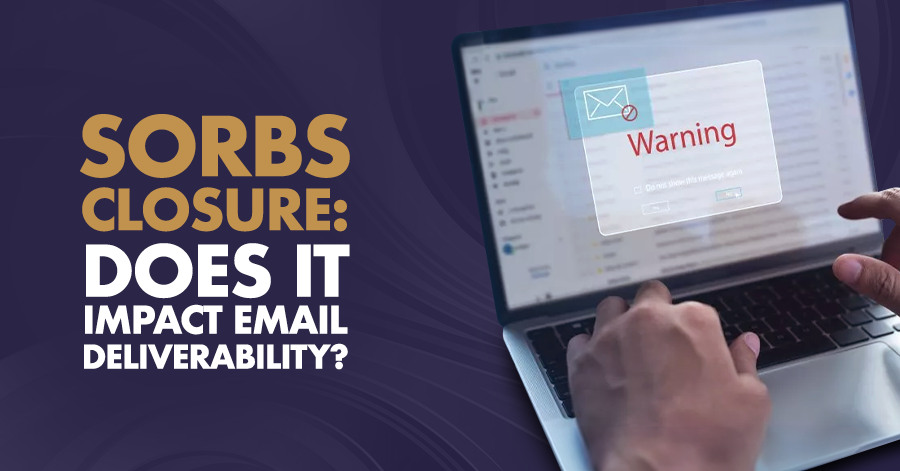
The Spam and Open Relay Blocking System (SORBS), one of the oldest domain name system-based blackhole lists (DNSBLs), closed shop on June 5, 2024, after more than two decades online. The blocklist was acquired by Proofpoint Inc., in 2011 but continued operations as a free, standalone service until it was retired.
SORBS’ sudden closure with no real explanation other than the statement, “Please note that this service has been decommissioned and will no longer contain reputation data,” has ignited more than a few conversations about the future of free and open-source software and what the future may hold for the currently decommissioned SORBS. On a more practical level for email marketers, it’s a good reminder to monitor and improve your email deliverability.
SORBS: A History of Plaudits & Criticisms
In its heyday, SORBS allowed users to effectively block spam and malicious emails from more than 12 million host servers and counted several government organizations among its 200,000 patrons.
Widely regarded as a pioneer in the anti-spam industry, SORBS was praised by mail administrators for its ease of integration into mail server workflows as well as the ability to choose and reference blacklists at varying levels of strictness. It was SORBS’ transparent operating practices that won it the most praise.
Conversely, it faced criticism for being highly sensitive, overblocking IP ranges, and having issues accessing its databases. According to email anti-abuse expert Mickey Chandler, SORBS wasn’t particularly relevant in the email marketing industry and was mainly the domain of “hobbyist email administrators” in the years leading up to its closure.
Will it be reinstated? The community hopes that SORBS will be taken over by legitimate sources instead of spammers who have expressed interest in acquiring the blocklist for years.
What Does This Mean for Email Marketing?
The closure of SORBS shouldn’t have an impact on most marketers. However, those who relied on SORBS for spam filtering will need to explore alternative blocklists. Spamhaus, SpamCop, Barracuda, and the Composite Blocking List (CBL) are a few that are already in existence while newer players like Data443, with Cyren, have been quick to jump onto the bandwagon.
The closure of SORBS is characteristic of the shift from open-source software to enterprise technology that leverages AI to recognize abnormal behavior patterns.

How Should Marketers Ensure Email Deliverability?
The answer is simple. It is to continue implementing the best practices for, and optimizing email campaigns. Some of them include:
- Monitoring your IP: Monitoring your IP reputation remains a crucial step to avoid blacklisting. It is vital that your sender score is checked, and emails comply with any applicable regulatory requirements and privacy laws.
- Analyze spam scores: Conduct email preview tests to assess your spam scores and take corrective actions where necessary.
- Implement authentication protocols: Configure your domain with your own SPF (Sender Policy Framework), DKIM (DomainKeys Identified Mail), and DMARC (Domain-based Message Authentication, Reporting, and Conformance to maintain control over your sender reputation. A fixed, static IP address can also help build reputation.
- Consistent sending volumes are key: Spam filters monitor inconsistent behaviors, such as sudden spikes in email sending. Keeping your outgoing emails at consistent levels will help you avoid triggering these filters.
- Maintain clean email lists: Old, outdated email addresses on your emailing lists can wreck your deliverability, resulting in higher bounce rates and raising red flags with spam filters.
- High-quality content: What you send your subscribers matters. Creating high value content is a key factor in driving engagement and reaching your campaign goals.
Avoid Spam Filters by Maintaining Email Marketing Hygiene
Email marketing is an effective marketing strategy that offers robust ROIs. Integrated email marketing strategies can help maximize the impact of your email marketing campaign. Checking your sender reputation, analyzing your spam scores, effectively segmenting your subscriber list, adopting best practices, and addressing issues immediately are all ways you can keep your deliverability metrics on track.
Need some help? Contact our team today to get expert help optimizing your email campaigns to build trust and ensure they reach their intended users.





